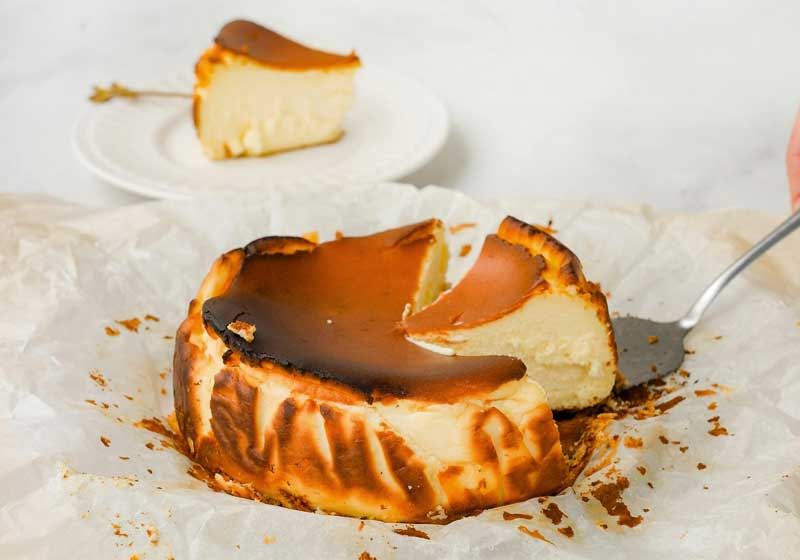France – the home of fine wine, existential philosophy and smelly cheese. If you are new to the world of French cheese, fear not, we’re here to navigate you through this deliciously complex terrain. Take heed, by the end of this you’ll be dazzling your friends with your newfound fromage finesse, so be prepared to take centre stage at your next upper crust soirée.
Let’s dive into our top five French picks, the flavour profiles and how best to pair them:
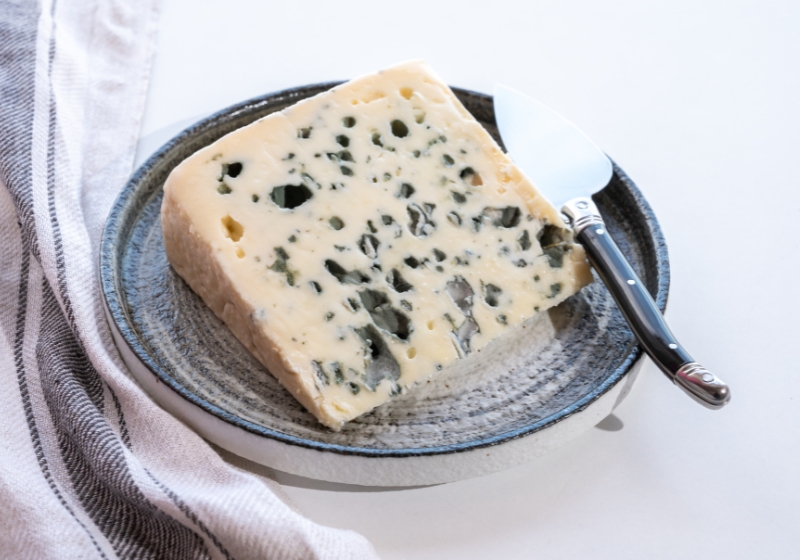
Roquefort
The ‘King of Blues’, Roquefort is a sheep milk blue cheese from Southern France. Aged in the caves of Roquefort-sur-Soulzon, it is a tangy, creamy white cheese with veins of blue mould. Legend has it the cheese was discovered when a young lad was eating his lunch of bread and ewes’ milk cheese saw a beautiful girl in the distance. Ditching his meal in a nearby cave, he ran to meet her. Returning a few months later, the mould from the cave had transformed the plain cheese into Roquefort.Flavour profile: Bold with a slight spiciness, yielding to a tangy aftertaste. Crumbly in texture with a creamy mouthfeel, this cheese isn’t for the faint hearted.
How to eat: Enjoy it crumbled over a fresh salad with walnuts and pears, or simply spread it on a chunk of crusty baguette.
Best pairings: Balance Roquefort’s bite with a sweet Sauterne, or even a crisp, acidic Riesling. For a truly French experience, pair it with robust red Bordeaux.
Party tip: Casually mention that Roquefort was a favourite of Emperor Charlemagne and watch the adoration roll in.
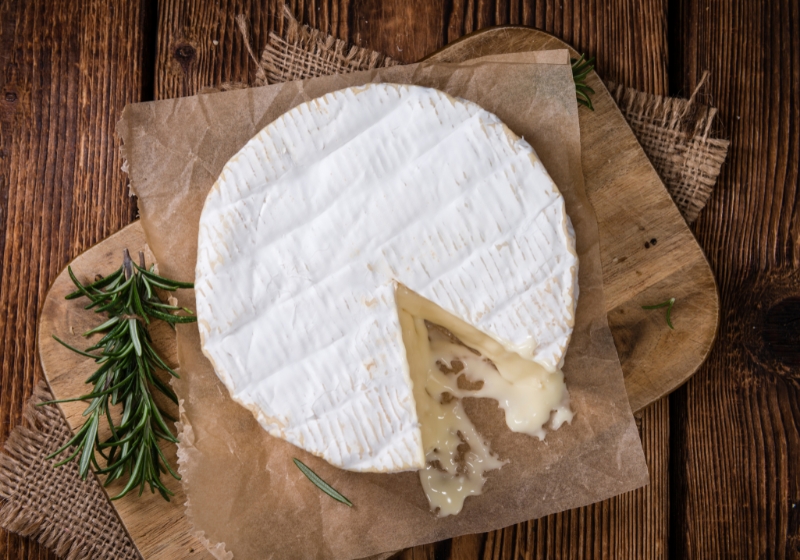
Camembert
The heartthrob of Normandy, Camembert’s embrace has taken over the world. Reputedly first made in 1791 by a farmer from Normandy, Marie Harel, the soft, cow’s milk cheese is steeped in history. Marie is credited with refining an existing cheese recipe, then launching it to the wider world in the form of Camembert. She passed her secrets on to her daughter, whose husband later presented a prized wheel to Napoleon III, gaining a royal seal of approval.Flavour profile: Kissed with earthy sweet tones when biting through the bloomy rind, to a buttery, creamy interior with hints of caramelised butter and vegetal mushrooms. The aftertaste is somewhat tangy with a soft finish.
How to eat: Let the cheese reach room temperature to fully appreciate its gooey perfection. Pair it with apples or warm it slightly and drizzle with honey. Let the cheese be a vehicle for an indulgent treat.
Best pairings: A chilled glass of Champagne, or a fruity cider from Normandy. White wines that tend on the dry side or light-bodied reds all work well with the luxurious texture of Camembert.
Party tip: Did you know that Camembert is ripened in wooden boxes which are used for its packaging? If you didn’t you do now, so be sure to drop this when the Camembert comes out.
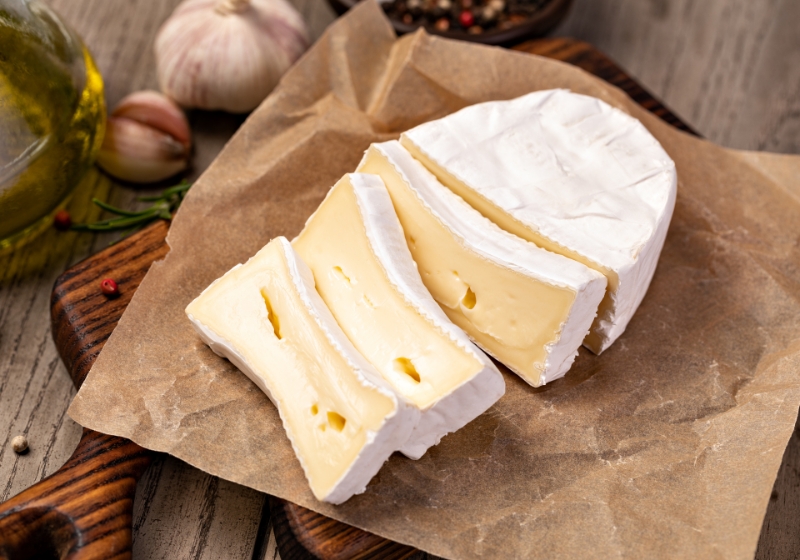
Brie
The Queen of soft cheeses is not to be confused with Camembert - it is a mortal sin to do so. While they may visually appear the same, the flavours couldn’t be on further arms of the spectrum. Loved by Kings, courtiers and poets alike, Eustache Deschamps (a lover of Brie, but not of France) once famously wrote: "Brie de Meaux is the only good thing to come out of this country”, while Louis XVI lost precious minutes in his daring escape from arrest at the house of Sausse to satisfy his appetite for Brie with red wine.Flavour profile: Soothing and mellow with a subtle nuttiness. Compared to Camembert, the rich and buttery taste maintains while opening up to a soft, creamy flavour.
How to eat: Again, best served at room temperature. Divine on a cracker or baked into a pastry, the soft texture is just as much a highlight as the flavour. For a truly indulgent treat, serve with quince or figs. All the cured meats work well with Brie.
Best pairings: For a young Brie, you’re looking towards the steely Chardonnays or fruity Sauvignon Blancs. While more mature Brie is best suited to a fruit-rich Merlot or a smooth-bodied Pinot Noir. Of course, a bottle of Champagne can turn anything into a celebration, so pop the cork!
Party tip: Show off your cheese cred by pointing out the difference between Brie and Camembert.
Brie: Traditionally produced in larger wheels, ripened more slowly, milder in flavour and has more structure to its texture.
Camembert: Stronger in taste, slightly sour by comparison and sometimes has a chalky taste. Softer in texture and when warmed, is much creamier than Brie.
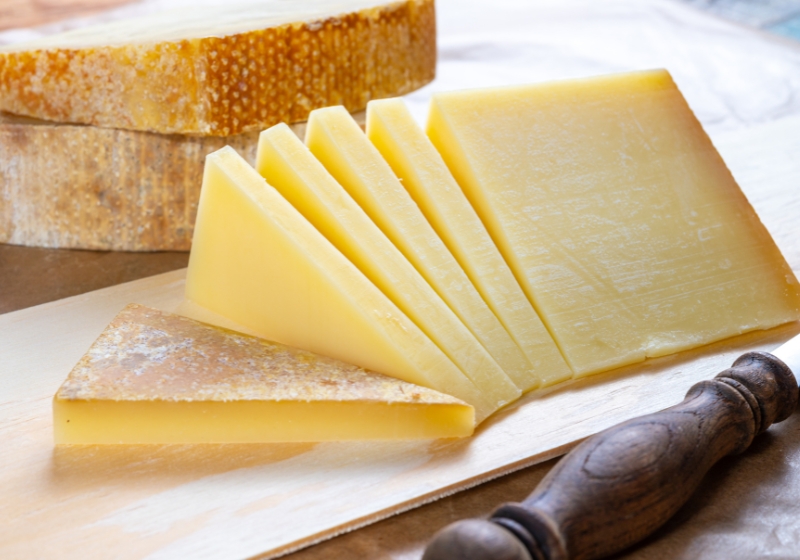
Comté
Comté is the pride of the Jura mountains. A heavily protected method of production, fresh from the farm milk of Montbéliarde or French Simmental cows (or cross breeds of the two) is permitted. There can be no more than 1.3 cows per hectare and they must be fed fresh, natural feed.
We can discuss the regulations around this firm cheese for hours, but the main points are the cows are bloody well looked after (so they should be). After an intense production, each cheese is awarded a score out of 20 by inspectors where they are graded on visual appeal, taste, texture, internal appearance and quality of rind. Any cheese scoring 12 or less is prohibited from using the Comté name and sold for other purposes.
Flavour profile: Comté has a complex flavour profile. Hints of nuttiness flash against sweetness and often a subtly fruity taste. Allowing the cheese to sit on the palate, you’ll pick up hints of caramelised butter and smoke.How to eat: The ultimate versatile cheese, enjoy it on its own and let the nuances shine through. Also great for melting, you can enjoy it melted in a fondue, folded with eggs or sprinkled on dishes. Don’t go past putting a couple of slices in a humble sandwich with some wholegrain mustard.
Best pairings: As a rule of thumb, you’re looking to dry whites and light to medium-bodied wines. Depending on age, the flavours will vary. Everything from Champagne (no surprises there) to Nebbiolo, Pinot Noir, Rijoa, Gamay Noir, Viognier and minerally Chardonnays.
Party tip: Impress the party by mentioning the strict aging process of Comté, which can range from at least 4 months to over 2 years.
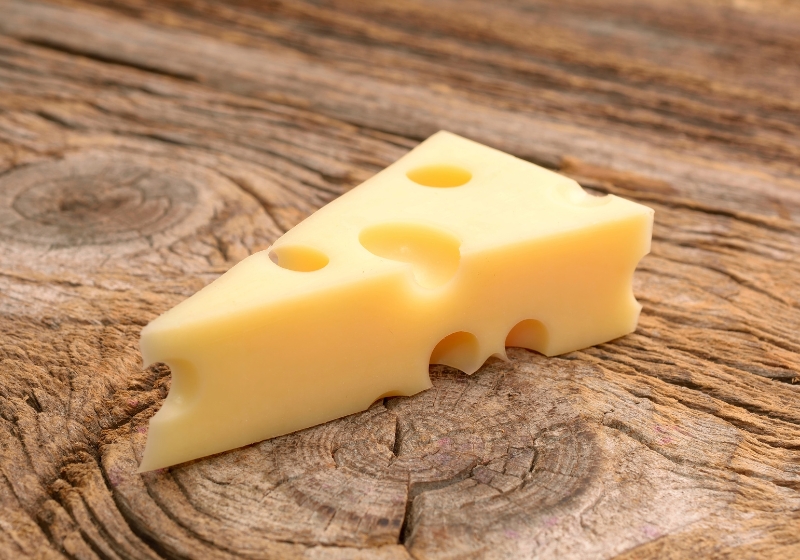
Emmental
This Swiss intruder is often thought to be Swiss-only. This is not the case! A staple in the French repertoire, Emmental is a medium-hard cheese with characteristic holes. Produced in a number of regions, the best Emmental comes from the Brown Swiss dairy cows of Bern. The curing process is quite interesting, in which the rind is kept clean. The cheese cures from the inside out, with carbon dioxide producing bacteria creating the walnut-sized holes.Flavour profile: Sweet and slightly salty when fresh and immature, with a pleasing sharp and nutty flavour when fully ripened. Either way, you’re getting a mild cheese with subtle hints of sweetness.
How to eat: Ideal for melting, Emmental shines in a classic French fondue or atop a Croque-Monsieur. Much like Comté, Emmental doesn’t go astray in a simple sandwich. When serving as a slice, team it with slightly tart apples, pears, figs and berry jams.
Best pairings: Light and fruity Pinot Noirs, aromatic Gewürztraminers and acidic Sauvignon Blancs all pair beautifully with Emmental.
Party tip: Did you know music impacts the flavour of Emmental? In a study conducted in 2018, nine wheels of Emmental cheese were placed in separate wooden crates and over six months were exposed to A Tribe Called Quest, Led Zepplin or Mozart. The consensus? The music impacted both flavour and aroma, offering distinct variations between each wheel and genre.
Armed with this knowledge, you’ll not only have a better appreciation and understanding of the nuances of French cheese, but also be the fromage aficionado at your next gathering. The key to any cheese, like most of the fine things in life, is to take a moment to savour and enjoy it.



